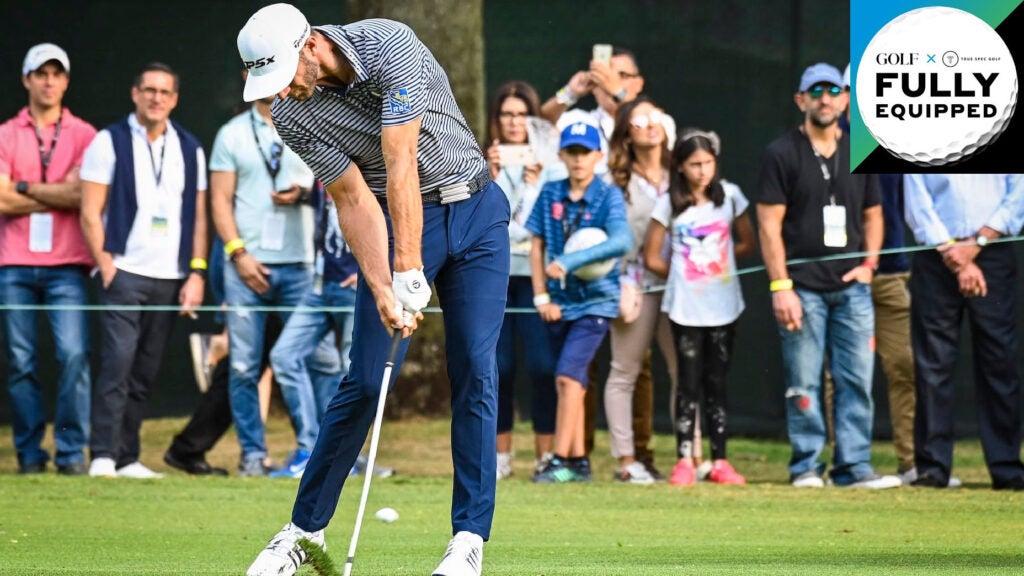Welcome to another edition of the Fully Equipped mailbag, an interactive GOLF.com series in which our resident dimplehead (a.k.a., GOLF’s managing editor of equipment, Jonathan Wall) fields your hard-hitting gear questions.
If I moved the lie angle on my clubs from standard to 1.5 degrees flat, would that have any impact on how high I’m hitting the ball? — Doran Drummond
If you’ve ever heard a fitter utter the words “lie angle” before, you know it’s typically tied to impact consistency and direction. For those who need a bit of a refresher on lie angle, it’s defined as the angle that’s formed between the shaft and turf when the sole of the club is grounded.
Depending on your height, arm length, posture and impact location — this is where a certified club-fitter like 8AM Golf sister company True Spec comes in handy — you may need to adjust the lie angle to improve your chances of making consistent contact and starting the ball on line. If the club is too upright, the raised toe won’t make contact with the ground, causing the ball to start left of its intended target. The opposite occurs (heel doesn’t contact the ground) when the club is too flat. This is likely common knowledge for a golfer who plays regularly.
We know direction and impact location can be altered with a lie angle adjustment, but what about launch? In my nearly 10 years covering equipment, I can’t recall many discussions about the correlation between launch and lie angle. If you want to change the launch, you can bend the club weaker or stronger or try a different shaft.
In situations where I don’t have all the answers, I enlist guys who have far more experience to offer their take. In this case, it’s True Spec’s VP of Tour and Education, Kris McCormack.
According to my co-host on GOLF’s Fully Equipped podcast, it’s actually a thing.
“You can definitely go down the rabbit hole on lie angle,” McCormack said. “You start to talk about the average scratch player has roughly four degrees of ulnar deviation in their wrists as they come through impact. So lie angle becomes subjective, turf conditions you play on, etc. But if you’re talking about just static lie angle adjustments and that toe starts to get into the turf just before the rest of the blade, it’s gonna want to hold the face open a bit and present more loft at impact as the player releases the club through the turf. You can see a little bit higher initial launch and more spin by going flat. The easiest answer is yes it’s possible to see a higher trajectory and more spin by flattening out the golf club.
“It’s really subjective to the player. If I have a competitive player who comes to see me and I’m consistently seeing turf interaction toe down and I’m looking at that player and his start lines are exactly where he wants it to be, I’m going to be really hesitant to make a lie angle change because it’s going to change his start lines. That’s going to change his curvature downrange. Even though it fits and gives us better turf interaction, it doesn’t do the player any favors with the starting line he sees in his mind and the shot shape he likes to play.”
It’s an interesting theory, no doubt. Is it worth going down the “rabbit hole” and testing to see if it works? Potentially. Just be aware of what you’re altering in the process (start line and impact location) before you make any significant changes.
Want to overhaul your own bag for 2021? Visit the expert fitters at our sister company, True Spec Golf. And for the latest gear news, check out GOLF’s Fully Equipped podcast below.
